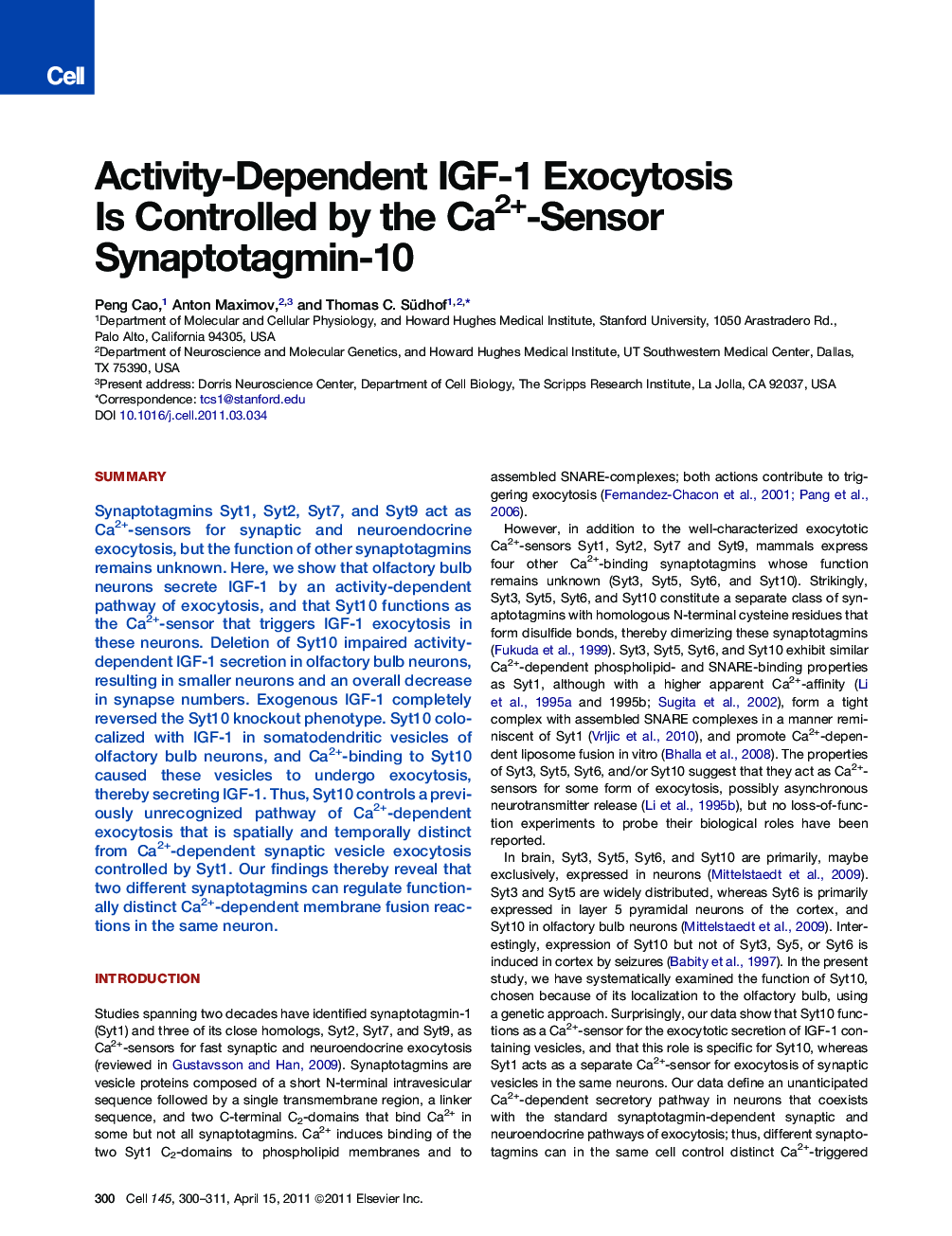| Article ID | Journal | Published Year | Pages | File Type |
|---|---|---|---|---|
| 2036464 | Cell | 2011 | 12 Pages |
SummarySynaptotagmins Syt1, Syt2, Syt7, and Syt9 act as Ca2+-sensors for synaptic and neuroendocrine exocytosis, but the function of other synaptotagmins remains unknown. Here, we show that olfactory bulb neurons secrete IGF-1 by an activity-dependent pathway of exocytosis, and that Syt10 functions as the Ca2+-sensor that triggers IGF-1 exocytosis in these neurons. Deletion of Syt10 impaired activity-dependent IGF-1 secretion in olfactory bulb neurons, resulting in smaller neurons and an overall decrease in synapse numbers. Exogenous IGF-1 completely reversed the Syt10 knockout phenotype. Syt10 colocalized with IGF-1 in somatodendritic vesicles of olfactory bulb neurons, and Ca2+-binding to Syt10 caused these vesicles to undergo exocytosis, thereby secreting IGF-1. Thus, Syt10 controls a previously unrecognized pathway of Ca2+-dependent exocytosis that is spatially and temporally distinct from Ca2+-dependent synaptic vesicle exocytosis controlled by Syt1. Our findings thereby reveal that two different synaptotagmins can regulate functionally distinct Ca2+-dependent membrane fusion reactions in the same neuron.PaperClip To listen to this audio, enable JavaScript on your browser. However, you can download and play the audio by clicking on the icon belowHelp with MP3 filesOptionsDownload audio (4733 K)
Graphical AbstractFigure optionsDownload full-size imageDownload high-quality image (469 K)Download as PowerPoint slideHighlights► IGF-1 is secreted by calcium-triggered exocytosis from olfactory bulb neurons ► Synaptotagmin-10 functions as a calcium-sensor for IGF-1 exocytosis ► Deletion of synaptotagmin-10 impairs olfactory bulb function ► Different synaptotagmins control distinct forms of exocytosis in the same neuron
